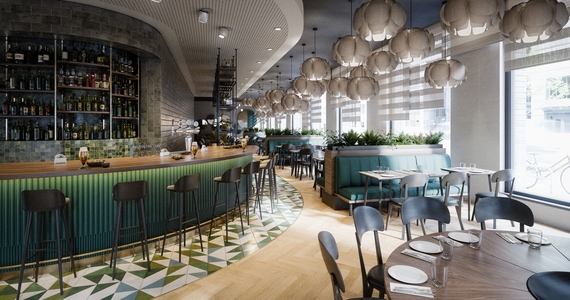Why Eating at Local Restaurants Sustains Your Neighborhood and Delights Your Taste
Eating at neighborhood dining establishments uses greater than simply a meal; it works as a crucial component in supporting community vitality and financial resilience. By buying these establishments, people not only delight in varied cooking experiences however also add to local task development and the support of local farmers. This symbiotic relationship fosters a rich tapestry of flavors that reflects regional culture and heritage. The implications of such options expand much past the plate, welcoming us to consider exactly how our eating habits shape the neighborhoods we populate. What might this mean for the future of local eating and area connection?
Financial Effect of Local Dining

The financial influence of neighborhood dining prolongs much past the restaurant itself, affecting a large range of fields within the neighborhood. Local restaurants play a pivotal role in stimulating financial development by developing jobs, sustaining regional vendors, and contributing to metropolitan incomes. When consumers select to eat at local establishments, they help receive employment for chefs, web servers, and maintenance personnel, therefore improving the local job market.
Moreover, local dining establishments often resource active ingredients from close-by farms and manufacturers, cultivating a durable supply chain that profits different agricultural markets. This method not only supports local economies however additionally urges lasting farming techniques. Additionally, the sales tax created from these restaurants contributes to essential civil services, such as education and infrastructure, which further enhances community lifestyle.
Moreover, regional dining facilities commonly promote a sense of area, attracting homeowners and site visitors alike, which can cause enhanced foot traffic in bordering organizations. This interconnectivity amongst local ventures boosts financial durability, creating a vivid and lasting area environment. Essentially, the assistance of regional eating is a financial investment in the more comprehensive economic health and wellness of the area, advertising growth and sustainability for future generations.
Special Culinary Experiences

In addition, lots of neighborhood facilities embrace farm-to-table techniques, stressing the importance of seasonal fruit and vegetables. Restaurants can relish the freshness of ingredients sourced from nearby ranches, which not just improves flavor however additionally cultivates a connection to the local landscape. This commitment to high quality and area establishes the phase for unique culinary experiences that are commonly absent in chain dining establishments.
Furthermore, neighborhood chefs frequently try out combination cuisine, mixing diverse cooking customs to create exciting brand-new dishes. Such development not only tantalizes the taste buds however additionally motivates adventurous dining, inviting customers to broaden their culinary perspectives. Involving with regional restaurants allows diners to appreciate dishes that are not just about sustenance, yet regarding the creativity and passion that define the cooking world, making every dining experience truly unique and fascinating.
Fortifying Area Bonds
Eating at local restaurants plays a pivotal role in reinforcing area bonds by promoting connections amongst homeowners. These facilities work as vital meeting place where people can take part in significant discussions, share experiences, and produce long-term memories. As clients constant the same neighborhood areas, they cultivate a feeling of experience and friendship, reinforcing social connections within the community.
Moreover, neighborhood dining establishments usually show the unique social fabric of their areas, showcasing regional practices and culinary heritage. This party of local society not only enhances area Read More Here identity but additionally motivates residents to take pride in their environments. By getting involved in the regional dining scene, individuals add to a shared narrative that binds them with each other.
Community occasions hosted at dining establishments, such as open mic nights, fundraisers, or food celebrations, better enhance these links. They give possibilities for partnership and involvement among diverse teams, cultivating inclusivity and understanding. As locals gather to sustain neighborhood companies, they all at once support one another, producing an interconnected network that reinforces the neighborhood's resilience.
Fundamentally, eating at neighborhood dining establishments is not merely concerning food; it is an enriching experience that fortifies community bonds and cultivates a dynamic, united neighborhood society.
Sustaining Regional Farmers and Manufacturers

This method lowers transportation prices and discharges, advertising ecological sustainability while likewise improving the taste and quality of the recipes served. Seasonal menus, which highlight regional fruit and vegetables, enable a fantastic read dining establishments to supply unique culinary experiences that reflect the area's agricultural bounty.
Furthermore, supporting local farmers assists protect standard farming methods and motivates biodiversity. It equips small manufacturers, enabling them to prosper in a significantly industrialized food system. As neighborhood dining establishments pick to companion with these farmers, they aid keep a vibrant agricultural community, guaranteeing that local food systems remain durable.
Essentially, eating at neighborhood dining establishments is not just concerning taking pleasure in a dish; it is an investment in the regional economy and an affirmation of lasting methods. By choosing regional, diners play an important function in supporting their communities and sustaining the dedicated people that grow their food.
Protecting Local Culture and Heritage
Rooted in the traditions of their communities, regional restaurants function as important custodians of social heritage. By showcasing local ingredients and traditional food preparation approaches, these facilities preserve the distinct flavors and cooking techniques that specify neighborhood identification. Each meal tells a story, reflecting historical impacts and cultural narratives that have shaped the area over generations.
Furthermore, neighborhood restaurants frequently promote time-honored dishes gave via families, making sure that distinct social techniques stay active. This not only informs patrons regarding the area's heritage but likewise cultivates a sense of satisfaction and belonging amongst citizens. The feel, decor, and even songs in these establishments often resemble the local culture, giving an alternative experience that transcends plain dining.
Additionally, neighborhood restaurants add to the conservation of language and dialects, as menus and conversations commonly include local vernacular. By joining area occasions and celebrations, these restaurants enhance social bonds and promote social exchange. Basically, This Site eating at neighborhood restaurants is not merely a culinary experience; it is a possibility to involve with and sustain the rich tapestry of regional society and heritage, ensuring its connection for future generations.
Verdict

 Amanda Bynes Then & Now!
Amanda Bynes Then & Now! Melissa Joan Hart Then & Now!
Melissa Joan Hart Then & Now! Gia Lopez Then & Now!
Gia Lopez Then & Now! Nancy McKeon Then & Now!
Nancy McKeon Then & Now! Morgan Fairchild Then & Now!
Morgan Fairchild Then & Now!